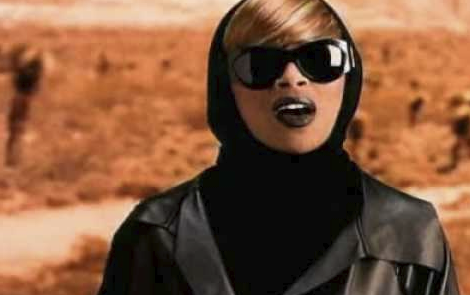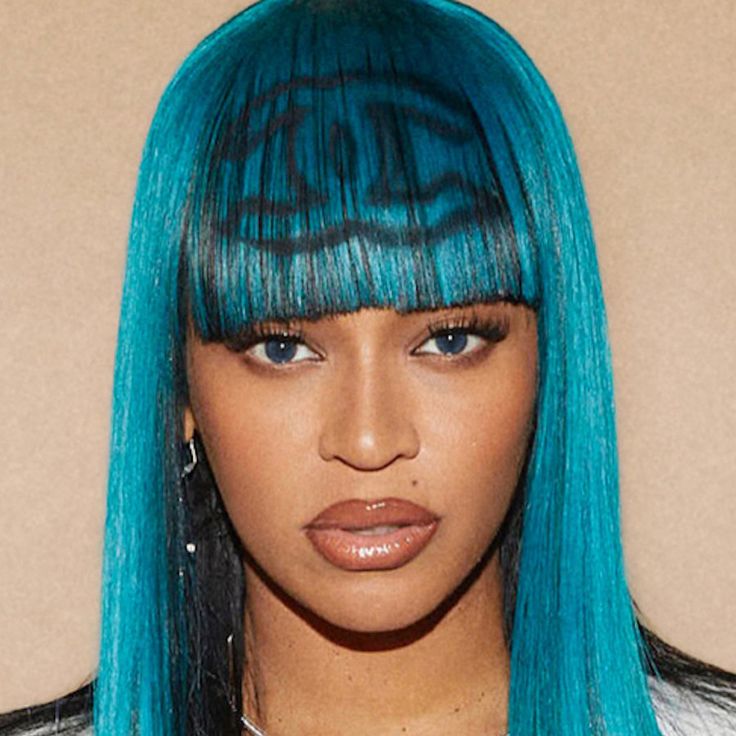Hair can play a symbolic representation of a person and it’s no different for celebrities, who in some cases, opt for wigs and extensions to help tell their stories.
But what many may not know are the visionaries behind some of the most iconic beauty moments in hip-hop history – one of them being legendary celebrity hairstylist Dionne Alexander, whose collection of wigs has officially debuted in the Baltimore Museum of Art’s The Culture: Hip Hop and Contemporary Art in the 21st Century exhibition.
On April 6, the line of coiffures donned by some of hip-hop’s elite (Lil’ Kim, Mary J. Blige and Missy Elliott, to name a few) was showcased at the museum, which is paying tribute to Alexander’s work and the stories behind them.
“It’s such an honor,” Alexander told Vogue. “I’m grateful that I’ve been able to impact the culture and share my art in this way.”
Alexander, the daughter of a cosmetologist, said her inspiration to get into hair stemmed from her mother who “transformed clients” at her Maryland salon. “It all came so naturally,” she said. “I would go into my mom’s salon and observe the hairdressers, who were all so glamorous. Being around so many creative women, I was drawn to the lifestyle.”
After high school, she would move to France where she developed a love for haute couture and decided to mix fashion and hair as a form of expression. “This was Paris in the 1980s, so everything was over the top. I was artistic, but coming from Washington D.C., where it’s more conservative, [the trip] was an eye-opener. I started thinking; differently, I’d always done hair shows and had clients, but when I returned, I knew I wanted to work with celebrities.”
In 1992, she booked her first gig working with MC Lyte for her Ruffneck music video. The legendary rapper’s sophisticated bob in the video began to draw attention with many asking who was behind the pioneer’s “mane” style.

“A lot of people noticed the difference and were asking ‘who’s doing Lyte?’ Once they knew, the artists all started coming to me.”
She continued: “You have to remember this is the period where we went from New Jack Swing to R&B and hip hop, which was a huge change,” she says. “Women and their contributions were being recognized more, especially once Mary [J. Blige] came around.”
She would then go on to create the renowned look in Mary J. Blige’s I’m Not Gonna Cry and I Can Love You music videos, the latter where she met Lil’ Kim. Meeting Kim, she said, changed everything.

“The common goal is making the artist look incredible, and our creativity was just allowed to flow,” she says. “Kim and [fashion stylist Misa Hylton] would come up with outfit ideas when they were talking and just hanging out; then we would find ways to match the hair and makeup to the [overarching] concept. The one thing I’d never do is just take the wig out and put it on someone,” she said. “I was always shampooing, styling, cutting, coloring, adding tracks, or taking them out. Everything was reconstructed in some way and customized for each appearance.”
She would then begin incorporating designer logos on Kim’s wigs, most notably the Queens’ rapper’s Chanel double C wig she wore in a 2001 Manhattan magazine feature spread.
“I used a Sharpie and a stencil,” Alexander said. “The wig was blonde, and I’d dyed it two colors, turquoise and a nice warm brown, then I created the stencil and just drew it out. This was 20 years ago, so wigs were not as prevalent or elaborate as they are now.”
The iconic look has since been recreated several times over, including for a Halloween tribute Beyoncé recreated in 2017.

Twenty years later The Culture exhibit examines the history behind many of her groundbreaking works, which also takes a look behind some of the greatest challenges she’s faced as a celebrity hairstylist.
“I didn’t want to reinvent the wheel,” Alexander said “Now we have much greater access to human hair, but wigs like Kim’s 1999 MTV Video Music Awards were synthetic wigs that I stacked and styled. I started working on this back in December of last year, so constructing and gathering materials was an undertaking.”
But overall, she says she has God to thank for her talent and accomplishments.
“I have to thank the creator,” she concluded. “This has been an honor, and I want the people who see the exhibition to be [as] inspired. We have so many tools now, but you must trust yourself and let things flow. Twenty years ago, when we were working on these looks, we didn’t know that they would become iconic, but what we did know was that we were having fun and letting our talents shine.”
